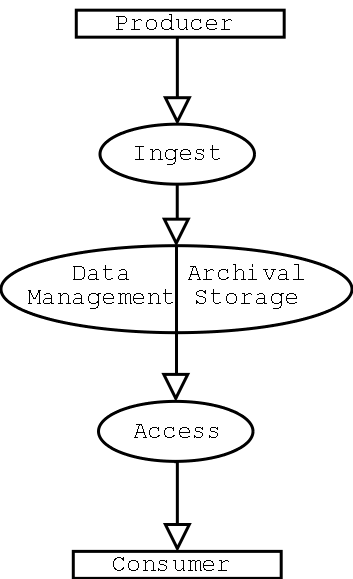
|
Following a request of the International Organisation for Standardisation (ISO) to develop standards in support of the long-term preservation of digital information, the Consultative Committee for Space Data Systems (CCSDS) coordinated the specification of the Reference Model for an Open Archival Information System (OAIS). Originally designed for data obtained from observations of the terrestrial and space environments, the model has found application in other communities.
The OAIS-model describes a conceptual framework for a complete, generic archival system. Positioned at a high level, it is defined as ``an organisation of people and systems, that has accepted the responsibility to preserve information and make it available for a Designated Community" [CCS01].
Outlining the responsibilities of an OAIS-archive, as a first step it has the duty to negotiate for and accept information to be stored from producers. After ingestion the quality of the document has to be ensured with regard to the designated community that must be able to understand it without external assistance. Having entered the collection item into archival storage, it must be managed such that it is preserved against all reasonable contingencies, thereby guaranteeing its authenticity. Finally, the consumer must be in the position to use the preserved information.
Proposing an abstract information model for digital objects and their associated metadata, an actual implementation is not specified. Thereby, each collection item is specified to be an Archival Information Package (AIP) that consists of the following four entities [Day99].
Several projects including the Nedlib-initiative (cf. Section 3.5) and Cedars (cf. Section 3.7) have based parts of their products on the OAIS-model and it can be expected to gain influence [Day01]. Seen from another perspective, the model constitutes a common framework for archival challenges, moreover it provides a common language that can facilitate discussion across the different communities.